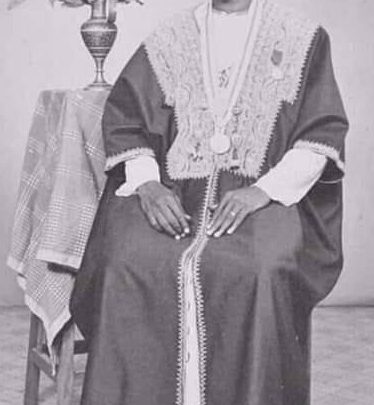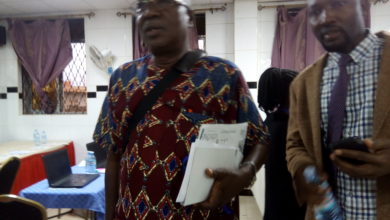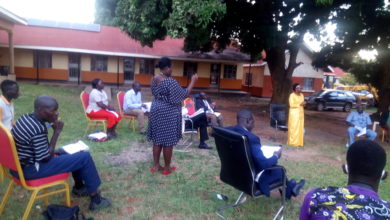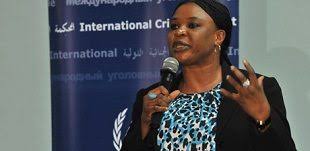
Global Politics
UGANDA: WHO BEWITCH AFRICAN LEADERS TO BORROW MONEY FROM THE POOR EUROPEANS NATIONS
In the late 1990s, Hon. Okumu Ronald Reagan was hot cake, the political icon in Uganda. when he visited Makerere University students from Acholi Sub Region would hide their girls friends for fear that he would grab them... ,
Leaders must show people the way and walk the way,
Show us the way,
Lead us in the way,
Transform us.
GULU CITY-UGANDA: Why are the rich people borrow money from the poor people, Africans leaders has gold mine in Africa, they have minerals mine in largest quantities all over African continent that could be enough to financed the whole African Gross Demotic Product GDP.
We now know why the Western Countries gang up against former Uganda dictator Amin and toppled in 1979, why the former British Colonial regime hated former Uganda founding father of Independent Dr. Apollo Milton Obote, and his regime was toppled twice
The former President Amin was viewed by international communities as an illiterate, but what he stood for during reign of 8 years rule cannot be compared to any African leaders, name it.
In 1974, President Amin who was participant of UN sideline bailed out South Korea, when Uganda government loaned South Korea, but to our dismay, now African leaders are borrowing money from Europeans Unions.
Political pundit observed that the whole 56 African Countries at list they have own minerals deposit in their countries, but to the contrary now the Europeans nation who do not have huge Uranium, black diamond, gold and mercury intern they are oozing with African wealth who they have looted in kind from African Countries
What bewitch African leader
Dr. A.M. Obote never looted Uganda Copper, and President Amin never looted Uganda Copper, on contrary during Obote I regime from 1962 to 1971 built Bugolobi flat within six months.
The Uganda People’s Congress government built Uganda Development Cooperation UDC which had 38 Cooperation as follows:
Uganda Spinning mill, Uganda Railway Cooperation, Uganda Postal Office, Kileme Mine Cooperation, Uganda Hotels, Kinyara Sugar Works Limited, Uganda Motor Limited, UGIL, Dairy Cooperation, Lira Staunch Factory, Lira Spinning Mill, Cooper Motor Cooperation, Uganda Fish Net Cooperation, Uganda Shoes Industry, Uganda Textile Mill, Uganda Ranches Industry including Aswa Ranch, Maruci Ranch, Nyankole Kwara Ranches, Uganda Cooperative Union Bank.
Other is Uganda Commercial Bank, Uganda Milling Factory based in Mable and so on.
Beside that during Obote I government, he built six story building, Mulago National Hospital, built Ntinda National Housing, flats, built Luthuli Housing estate, built Uganda Coffee Factory.
President Idi Amin also constructed Uganda National Conference, Apollo Hotel, and Radio Uganda four story house and Uganda Airline
The African leaders they are stealing money from their granaries and they are taking it to Europeans Countries, they are looting own resources and feeding the white men, this stupidity of African leaders.
In 1978 Uganda Gross Domestic Product GDP stands evolution annual GDP growth 4% of 2,420 m$ and in 1960s Uganda GDP much more than the Tiger Countries of Japan, South Korea,Tiawan, Malaysia and Democratic Republic of China.
The rest is history, we shall come to that.
Now, I am sorry to say what our society in 1960s, Acholi Sub Region position every household were in middle class. No any homestead which does not have radio sets, Kitanda vano, and bicycle.
Beside that, whole the household had at list there was each stable crops like millet, Simsim, Sorghum six dero lakodo full and two acres of cassava, do called that kind of society vulnerable.
We may blame the current woo of the long spells of Northern Uganda insurgency, the two decades LRA war.
But let us look at the post LRA war, when the former IDPs camps went back, a case in point the Palabek community was able to produced Simsim, each household had producing more than 10 tones of Simsim that had attracted Malaysia government to come and buy.
Until when their product was tampered with, sources intimated the statehouse sabotaged the simsim production.
The community of Palabek for about only five years from their return from IPDs camps were able to buy heads of cattle, thanks, Mr. Hilary Onek for your support.
What is the current situation of the people in Acholi Sub Region, it very bad when Acholi people can only afford only one meal in a day?
Chief Justice Alfonse Owiny Dollo Cigamio, during the burial of Mrs. Mary Okello in Keyo village says what led to abject poverty in Acholi Sub Region because at 11.00AM you find Acholi women dancing at day time, tengo Lamala sexual quaso for attracting male counter part, (sic), not to mention open land grabbing and sales of land due to ignorance and poverty.
Today Acholi community they are depending on relief food unlike the Norway in the 1960 to 1980 when they were depending on relief food.
Because the current leaders, the so called MPs who hails from Acholi Sub Region are either kids, prostitute or political colon who can not preempt what is social workers.
The reason why Acholi community had a settle community, because every young child was groomed by dayo, “Those were professor” who used to nursed mankind. Sorry we have lost them
The current Acholi MPs have what we called in Social Theory practice Psychodynamic theory
Around 1920: Casework is dominated by Psychodynamic theory
At the start of the 1920s, the new sciences such as psychology and sociology were flourishing. The ideals of science were dominant and influenced the development of these emerging disciplines. In the USA and some countries in Europe, social work had become a paid profession with a formal training. Methodical work was developed in regard to casework, but the discipline was in search of theoretical strengthening. By around 1920 this was being drawn from the field of psychology and, specifically, from psychodynamic theory.
From the turn of the century Sigmund Freud had been publishing his works, and in the classical psychodynamic theory he developed, the unconscious processes are the focal point for understanding the individual’s development, psychological disorder and social functioning.
After the First World War there was a demand for social workers to work with those injured in the war. Thus social workers met people who were struggling with psychological disorders; poverty was not necessarily the primary problem, and psychodynamic theory was useful in the work. In Norway the Norwegian Women’s National Council’s Social College was established in 1920, providing a one year ‘social course’.
Subjects such as history, hygiene, psychology, economy, sociology, and clerical work were taught (Ulstein 1990). In 1950 the first two year course of education of social workers started at Norway’s Civic and Social Work College.
It aspired to educate professionals who could be used in administration, implementation and management of the various welfare arrangements that were being built up in the post-‐war period in Norway. In social politics there was a strong belief that social problems could be prevented, first and foremost, by general welfare arrangements, but also that safety nets needed to be in place for all those who did not fit within the arrangements directed towards ‘everybody’.
The high level of professional competence in the new social worker training was to have at its core the knowledge and skills needed for social assessment and public administration.
Many of the subjects that made up the degree course were taught by teachers who had been drawn from areas within administration.
The Norwegian roots were in the social political development that had previously taken place. Tutvedt (1990), who was a student himself from 1955, writes that social work constituted just a small part of the education at that time. He says the following about social work as a discipline:
‘The first term used for the discipline was social welfare officer. It showed that this type of work was connected to a set function, namely the work of a social curator at a hospital or another medical institution. In broad terms social work was seen as working in the social sector. But there was no requirement that a person should have a professional education or work according to a special method (p.84).’
In this first period, from the introduction of the of the two year course in 1950 until the implementation of the Law of Social Welfare in 1965, many of the graduates went to work in hospitals. However, the demand for social workers was not great (Lund 1963).
Bernt Lund, who had been inspired by a study tour to the USA, was central in the development of social work education in its first decades. In 1963 he wrote a report for the Church and Education Department: The education of social workers in Norway.
An account and suggestions. He suggested strengthening social work as a discipline, and advised that it should include social work for individuals, social group work and social planning and administration. He also suggested that the percentage of social work in relation to other disciplines should increase to 27 % from its previous 10%. The administrative tradition which had held a central position in the training was now being challenged by the focus on social treatment.
Individual social work or casework had already had a position from the early years, and a few years later social group work entered the field. Both were imported from the US and, to a lesser degree, from England. Administrative work and planning had held a natural place from the outset.
The new emphasis on treatment and on the strengthening of individual social work and group work, received support from many, but some were skeptical of this change. Amongst them was Liv Kluge (Kuratoren nr 3, 1963). She agrees that it is important to learn methods in social work in the training, but argues that the weakness of the American model is that its focus is so much on the methods that the wrongs of one’s own society go unnoticed.
One problem that emerged was where to recruit the social work teachers from. Because it was a new discipline in Norway, there was no such group of professionals established in the welfare services.
The ‘solution’ came with ‘the America boat’ as many called it. To a large extent, teachers in social work came from the numbers of Norwegian men and women who had studied social work in the US.
They brought with them to the Norwegian Social Work Colleges a discipline that had its origins in American society, its value system and its social political context.
Since many of the large and extensive processes in society had an impact both in the US and Europe, albeit with some different effects due to societies’ dissimilarities, the breeding ground was not totally different.
The institutionalized social politics in Norway after 1945 were to a great extent built on providing general basic arrangements or services to all who met certain conditions, without any additional means testing. In the US the welfare arrangements were basically built on means testing. Private organizations, and not the government, were the ones administering important social institutions.
Hon Okumu Ronald Reagan insinuation
Hon. Okumu Ronald Reagan pour his heart after 25 years as Uganda Parliament, what does it means, here below what appeared in Acholi Wang OO forum.
Polber thanks for this kind of exchanges.
Truth is to be told only three kingdoms agitated with mass support return of kingdom.
These were Baganda Bunyoro and Toro. These began with the NRA war in the bush where agreements were reached formally for return of these kingdoms.
When NRM took power the open demands became real with formal petitions.
Truth is be told Busoga never demanded but they were invited to demand like it happened with other communities for selfish political reasons.
If you follow the history of Busoga it was founded also by colonial people from twelve clans five of which truly royal were the sons of omukama from Bunyoro and that further strengthen my earlier arguments of lack of smooth natural social and cultural evolution.
Evidence of formal petitions of the three kingdoms were led by their remnants of cultural institutions then while the rest including Busoga were led by politicians of those areas then including Acholi…all were invited to demand for as I said political
Dr. George Okello Lucima reaction says, I think Hon. Okello Okello you are right. Paramount is close to absolute authority dominant to be the center of accepted center of power.
Your view I thing relates to the role, natural influence and Socio economic base of Paramount which should not just last with external power influence call it colonial or others regime powers.
That is why when Obote abolished cultural leadership only areas like Buganda, Bunyoro and Tooro remained truly agitating for the return of their paramount kingdom structure and Acholi did not as a people.
Acholi remain satisfied with their informal unrecognized institution of Rwodi moo and elders which remained very influential with true recognition from our society until the war era.
Hon. Okello Okello is also right from the fact that social being evolves their institution and culture without imposition. For example what Polber brought up as words that were not Acholi but either Arab or Bantu is a result of gradual interaction over a long period of time and t
|






